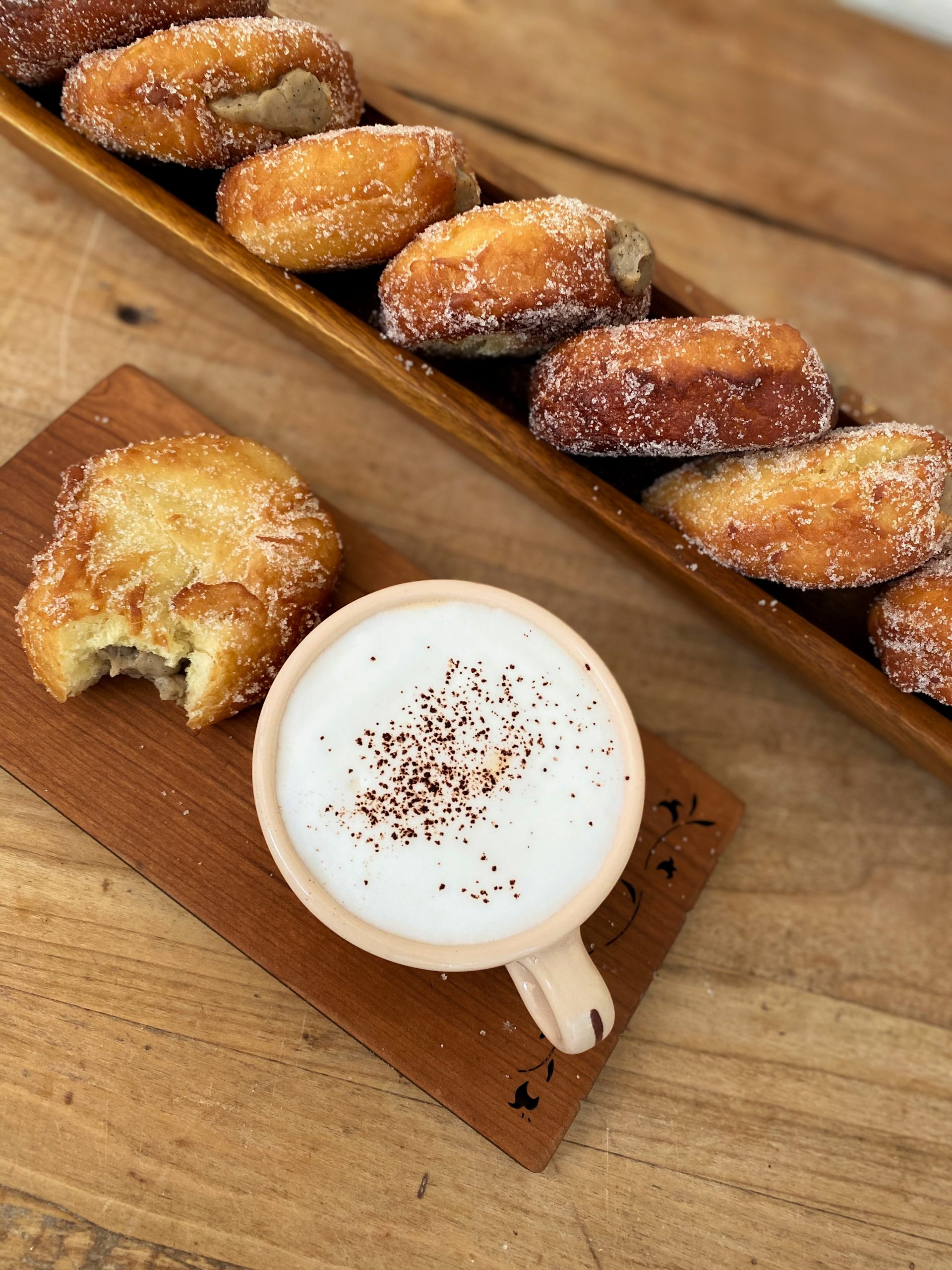I recently had the opportunity to join the San Francisco Professional Food Society at the Numi Tea Garden in Oakland. It was a long-overdue visit, and one that I would definitely like to take again — just not during rush hour!
The group was gathering at Numi for a tea and food pairing entitled The Soul of Tea meant to enlighten us all about the breadth of flavors and possibilities both in pairing and cooking with tea. To help us on the journey, Chef Dean Dupuis of Oakland’s Pican Restaurant created a menu to be paired with a flight of Numi Organic Teas.
From our first taste of the Honey Poached Bosc Pear with Sea Salt paired with Numi’s Spring White tea, I was sold. Not only did I enjoy the surprising pairing of seas salt with the poached pear, but also the smooth and velvety flavor of this limited Bai Mu Dan white tea transported me back into the world of tea.
I have to say I enjoyed the entire evening of pairings, but was particularly impressed with the Emperor’s Puerh tea smoked and barbecued duck breast on scallion pancake. (OK, Chocolate Puerh Tea, Ginger and Cinnamon Truffles, was a big hit as well). Not only was it the food, but it was the discussion of Puerh (pronounced POO-air) that really caught my attention.
I have been an on-and-off fan of Puerh for several years. But as Numi’s co-founder and creative director Reem Rahim walked us all through the history, travel, art and craftsmanship that goes into each cup of Puerh, I felt a renewed interest for this ancient tea. After all, tea connoisseurs regard it as the King of Tea for it’s unique flavor and aroma.
Puerh is an ancient healing tea known for its medicinal properties and rich taste. It is one of the oldest types of tea in China, with a history that can be traced back more than 17000 years to the Eastern Han Dynasty. Puerh tea is revered in China as a traditional medicinal tea with many health benefits, all of which have been well documented throughout the ages. Many studies have revealed that Puerh consumption can help prevent heart disease and cancer, aid in digestion and weight loss, improve blood circulation, and even serve as an anti-aging beverage.
During it’s height of popularity Puerh tea was freely traded and even used as money for the bartering of goods. Premium Puerh tea was offered as a tribute tea to the Emperor of China and to this day Puerh tea remains a highly valuable commodity. Reem noted that many Chinese invest in Puerh bricks, which can amortize through the years, as a way to invest in their children’s future. (As I write this, I gaze at the brick of tea that sits on my office shelf as decoration, and I wonder . . . Should I put it in the bank, or just break off a bit and steep it?)
Puerh is one of the more ancient styles of tea in China, and is made using a tea strain that is indigenous to Yunnan, where fertile soil and misty condition are suitable for growing large leaf tea. The trek into the land of Puerh is a long one. And, once there, the locals guard the trees and the preparation of the leaves closely, often requiring that no photos be taken.
The old, wild tea trees in this region are scarce – and valuable. Reem recalled the story of her recent visit to Yunnan to visit the woman who was entrusted to guard the oldest known tree in the region. Luckily, she had the opportunity to have some prepared for her.
Puerh tea is made by using the top, tender leaves (considered the best quality) of this large leaf tea ‘bush.’ Puerh tea can be picked throughout the year, although those picked in spring and autumn are considered the best.
The best Puerhs are hand made using the unique traditional techniques, as opposed to more mechanical preparations. Unlike traditional teas that are oxidized for an 8-hour period, Puerh undergoes a unique 60-day fermentation process resulting in a bold, earthy flavor with hints of malt and elevated levels of antioxidants. Legend has it that Puerh was discovered after the leaves were picked and piled on top a horse for transport across the country. Upon arrival, the Chinese brewed the tea, which had been compacted and fermented during the long voyage, and enjoyed a delicious new tea. Since then, the leaves of these ancient trees have been processed in the same manner. Once picked, the leaves are placed on the ground (or in a warehouse), piled atop each other, and then covered. Puerh can be compressed into bricks and aged, like fine wine, for months, years or even decades. This increases its value, health benefits and premium taste.
Numi’s Organic Puerh comes from 500-year-old, wild, organic tea trees grown in China’s pristine Yunnan Mountains. The maturity of these trees yields a superior tasting tea compared to younger, pruned bushes.
Puerh teas (traditional black, green and white) are available in several forms: traditional bricks, toucha (which are small nuggets of compressed tea), and loose-leaf.
To brew, use approximately 3 to 4 grams per serving, then add hot, boiling water (at a full rolling boil). Steep the tea for two to three minutes, stir and then drink. Puerh can be stored in paper in a cool, dry place. Do not store it in plastic bags as the condensation and further oxidation may develop, spoiling the tea.





